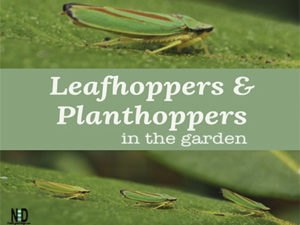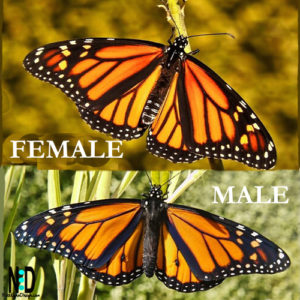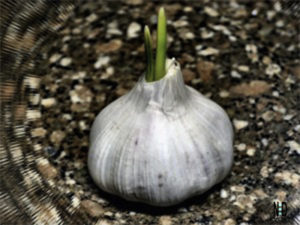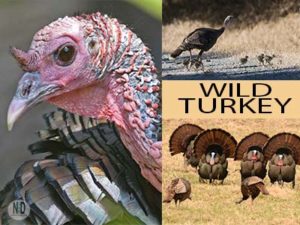Strolling through a sun-dappled woodland edge on a quiet afternoon, where the air hums with life’s quiet drama. That’s where I’ve often encountered the Golden-Backed Snipe Fly. A true gem of the insect world. This fly’s elegant form and behaviors, like its cooling postures, remind me of how even the smallest creatures adapt so cleverly to their surroundings, like how I adapt my hikes to the season’s rhythms.
From my rambles in Wisconsin’s moist woodlands, where the canopy filters sunlight into golden patches, I’ve come to appreciate these flies as agile hunters with a touch of iridescence. Let’s dive deeper into what makes them so captivating.
Appearance and Identification
The Golden-Backed Snipe Fly is a striking example of nature’s artistry, blending subtle colors and metallic sheen to stand out in the dappled light of the forest floor. As you’ve described, it’s primarily a black insect with a bright yellow back that catches the eye like a flash of sunlight on wet leaves. But that’s just the start—its body features an almost silver or white shimmering metallic striped look, giving it a jewel-like quality that makes it easy to spot once you know what to look for. In my journal, I’ve noted how this sheen shifts with the angle of the light, almost like it’s winking at you.

Scientifically, Chrysopilus thoracicus typically measures 10-15 mm in length, with a slender body, large compound eyes, and spindly legs that dangle during flight.
A key identifier, especially for telling males and females apart, is their eyes: females have smaller eyes that don’t meet in the middle, while males’ eyes do. I’ve used this detail during my observations to distinguish them, turning what could be a quick glance into a moment of discovery.
Habit and Behavior
These flies call woodland areas home, particularly in the eastern U.S. and Canada, where they thrive in moist, shaded spots near streams or forest edges—perfect hideaways in Wisconsin’s diverse landscapes. They’re most active from late spring through summer, zipping through the air in search of prey, which helps keep mosquito populations in check and supports a balanced ecosystem.
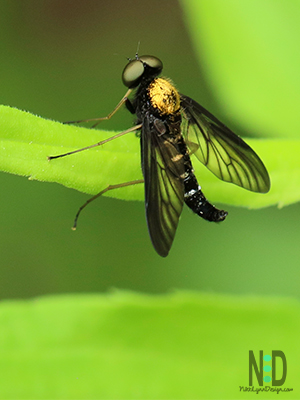
One behavior that fascinates me is their adaptation to heat, like the “obelisk position”.
This is when a female raises her tail and lifts her body off leaves or surfaces, angling toward the sun to cool down, much like dragonflies do on hot days. I’ve seen this during warmer outings, a clever way for them to regulate body temperature without retreating.
As predators, both males and females hunt other insects mid-air, using their strong legs to snatch prey, but they don’t bite humans, making them safe and enjoyable to watch.
Lifecycle and Ecology
The life cycle of Chrysopilus thoracicus is a short but vital thread in the woodland tapestry. Females lay eggs in moist, decaying matter on the forest floor, where larvae hatch and feed on organic debris or small invertebrates, aiding decomposition. Adults emerge in summer, focusing on mating and hunting for just a few weeks. Ecologically, they’re unsung heroes, contributing to pest control and nutrient cycling, which I’ve observed enhancing the health of wildflower patches during my hikes.
Practical Tips for Observing Golden-Backed Snipe Flies
If you’re eager to spot these flies yourself, here’s how to make the most of it, based on my adventures:
- Prime Spots and Timing: Seek out woodland edges or near streams in eastern North America, especially on calm days. In Wisconsin, early evenings in late July bring them out in full swing.
- Identification Tricks: Look for that bright yellow back and shimmering stripes, and check the eyes to sex them—binoculars are a game-changer for these details without getting too close.
- Mindful Observation: Always approach quietly to avoid startling them, and wear light clothing on warmer days. Remember, they’re part of a larger ecosystem, so tread lightly to protect their habitat.
Sharing these insights has me reflecting on how nature’s details, like a fly’s metallic stripes or cooling pose, connect us to the world around us. Have you had a chance to observe Chrysopilus thoracicus in your own explorations, or do you have questions about similar insects? I’d love to hear your stories in the comments—let’s keep the conversation buzzing! If this sparks your curiosity, grab your gear and head out; the woodlands are waiting with their endless surprise
Cooling Off
This female is in the obelisk position which is tail raised and lifting the body off the leaves trying to cool its body temperature.
You with see dragonflies raise their tails to do the same thing.
So, how in the heck does one know this is a female? Her eyes. Females have smaller eyes than males and do not meet in the middle.
More Insects
Insect Field Guides
AFFILIATE POLICY: Posts on this site may contain links to outside vendors that pay me a commission when you purchase from them, at no additional cost to you. Thank you for supporting this site!

